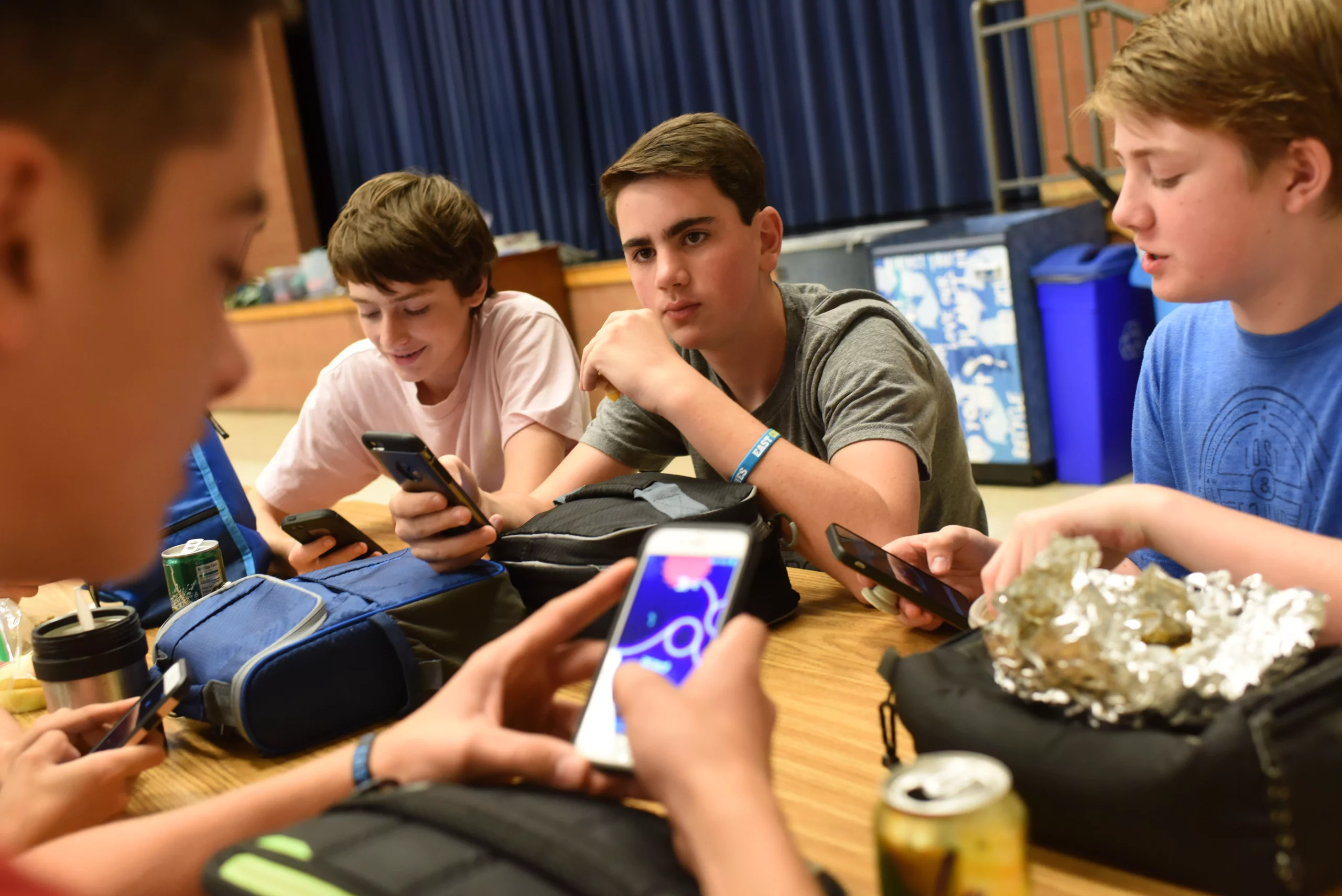This new rule mandates that all high school students place their phones in these lockboxes, which remain sealed until after school hours. Deon Whitten, the school’s dean of students, explained that the decision followed a successful pilot program in 2023. In this pilot, one ninth-grade class that adhered to a phone-free policy achieved the highest GPA across the school, underscoring the academic benefits of such restrictions.
Whitten emphasized the relief that comes with the absence of phones, stating, “Without the constant pressure of having their phones, students can focus solely on being learners. It removes the social stress and allows them to concentrate on their education.” Having been part of the school for three years, Whitten observed a significant improvement in the academic environment.
For years, educators have recognized the detrimental impact of cellphones on learning. A 2023 survey by Pew Research revealed that 72% of high school teachers identified cellphones as a significant classroom distraction.
The issue extends beyond academics. U.S. Surgeon General Dr. Vivek Murthy has raised concerns about the mental health effects of social media on youth. His recent advisory highlighted “parental stress,” noting that constant monitoring of children’s phone usage contributes to this growing concern.
Kim Whitman, a parent-turned-advocate, argues that restricting cellphone use can foster social development and strengthen the sense of community within schools. Whitman, co-founder of the advocacy group Phone Free, began pushing for phone-free schools after witnessing behavioral issues linked to social media among her own children. She pointed out that schools across the nation are reporting an increase in behavioral problems, such as fights organized through social media, and rising anxiety among students. “Phones make it challenging for students to truly connect and feel like they belong,” Whitman told CBS News.
Some students agree with the new policies, admitting that phones were a distraction. Jazmine Anderson, an eighth grader at Martin Luther King Middle School in Virginia, noted, “Without my phone, I can focus better. I’m not constantly worried about notifications or what’s happening on social media.”
These concerns have not gone unnoticed by schools and communities. According to the National Center for Education Statistics, approximately 76% of public schools have already prohibited the non-academic use of cellphones during school hours.
However, not all districts are eager to impose such restrictions. Some parents insist on having immediate access to their children for safety reasons, especially in light of the ever-present fear of school shootings, or simply for coordinating daily logistics. In Virginia, Governor Glenn Youngkin issued an executive order requiring school districts to limit or ban cellphone use by January 1, 2024. Despite this mandate, Youngkin acknowledged the “practical concerns” that arise from limiting phone access, particularly the need for families to stay in touch throughout the day.
Meanwhile, some educators are wary of enforcing a ban. Teachers in New York City, for instance, expressed reluctance to take on the role of “phone police,” a task that could potentially consume valuable instructional time. New York City’s school district, the largest in the nation, proposed a ban but struggled to implement it before the 2024 school year, CBS New York reported.
Back in Kansas City, Whitten reported a smooth transition to the new policy, though not without initial resistance from some parents. Concerns ranged from safety to maintaining control over their children’s access to phones. “Some parents worried about not being able to reach their kids during emergencies,” Whitten said, noting that these fears had to be addressed before the policy could be fully implemented.
Large school districts like Los Angeles have successfully implemented phone bans, while states such as Florida, Indiana, and Ohio passed legislation in 2023 to restrict cellphone use in schools. In other regions, the approach varies, with decisions being made on a district-by-district basis.
In Utah, the Granite School District introduced restrictions by providing students with pouches to store their phones during school hours, allowing them to keep their devices with them but preventing use during class. “Social media and texting have become major sources of bullying and harassment,” said Andrea Stringham, a spokesperson for the district. “Limiting phone use is expected to improve students’ academic performance and overall well-being.”
In New Jersey, the Cherry Hill Public School District is gradually implementing new cellphone restrictions, adopted in August. Superintendent Kwame Morton explained that while students will still carry their phones, they will be prohibited from using them during instructional time. Non-compliance will result in disciplinary action. Morton acknowledged the pushback from parents but emphasized that the school opted for a balanced approach. There was a shared concern about the impact of constant phone use on students’ mental health,” he said.
As more districts across the U.S. consider similar policies, the debate over cellphone restrictions in schools continues, balancing the benefits of reduced distractions with the practical need for communication and safety.


